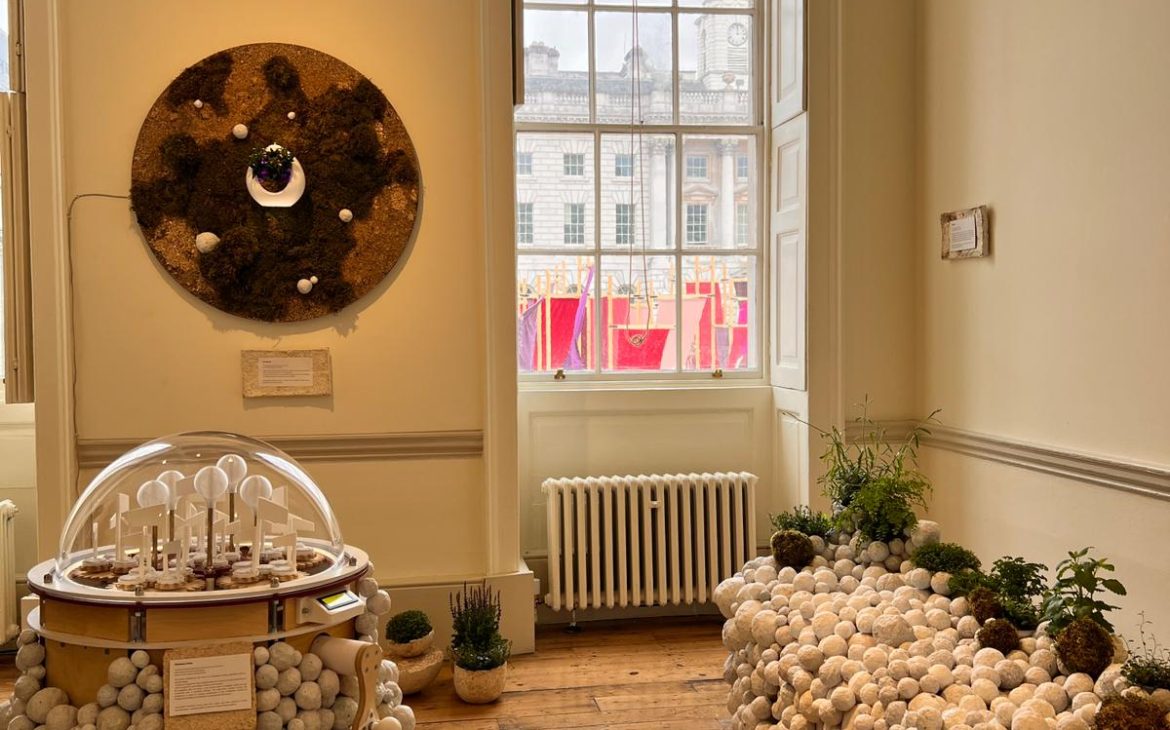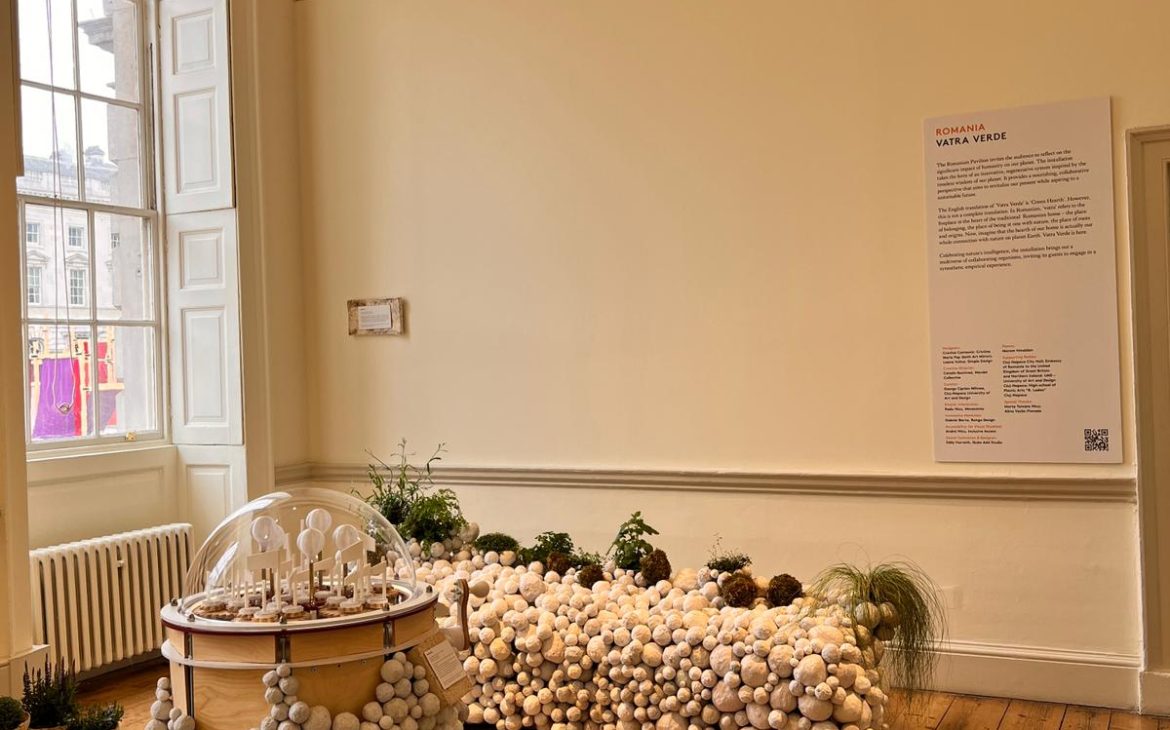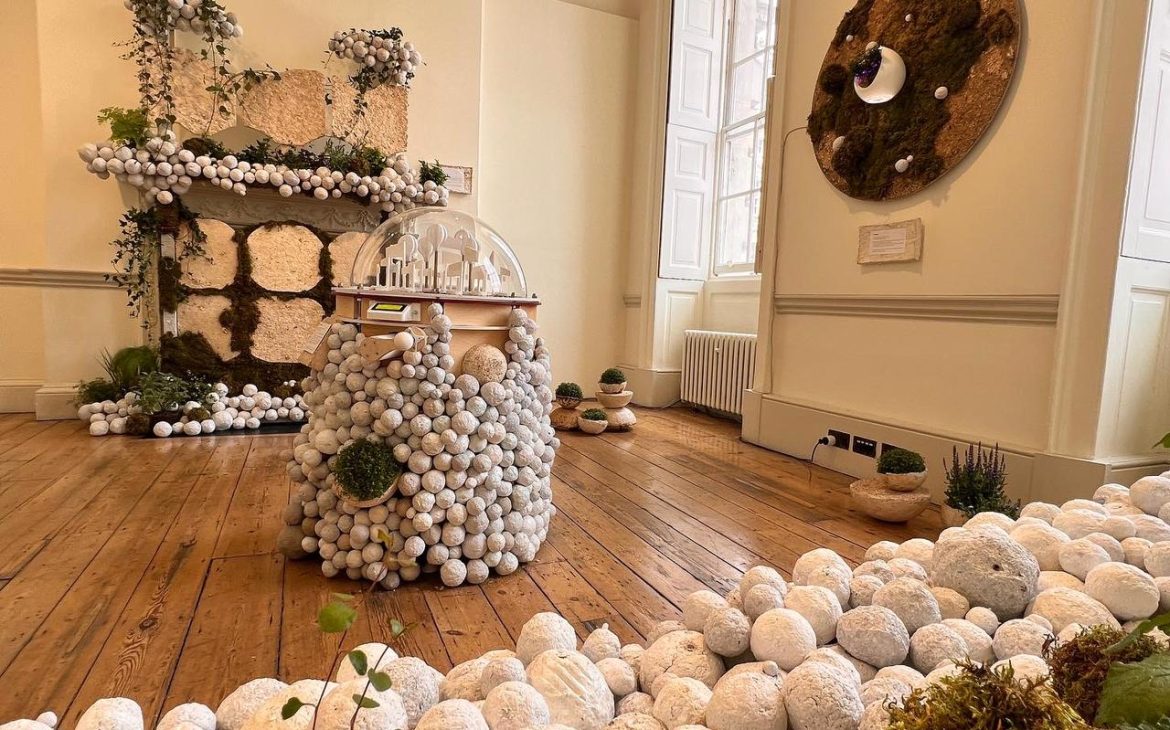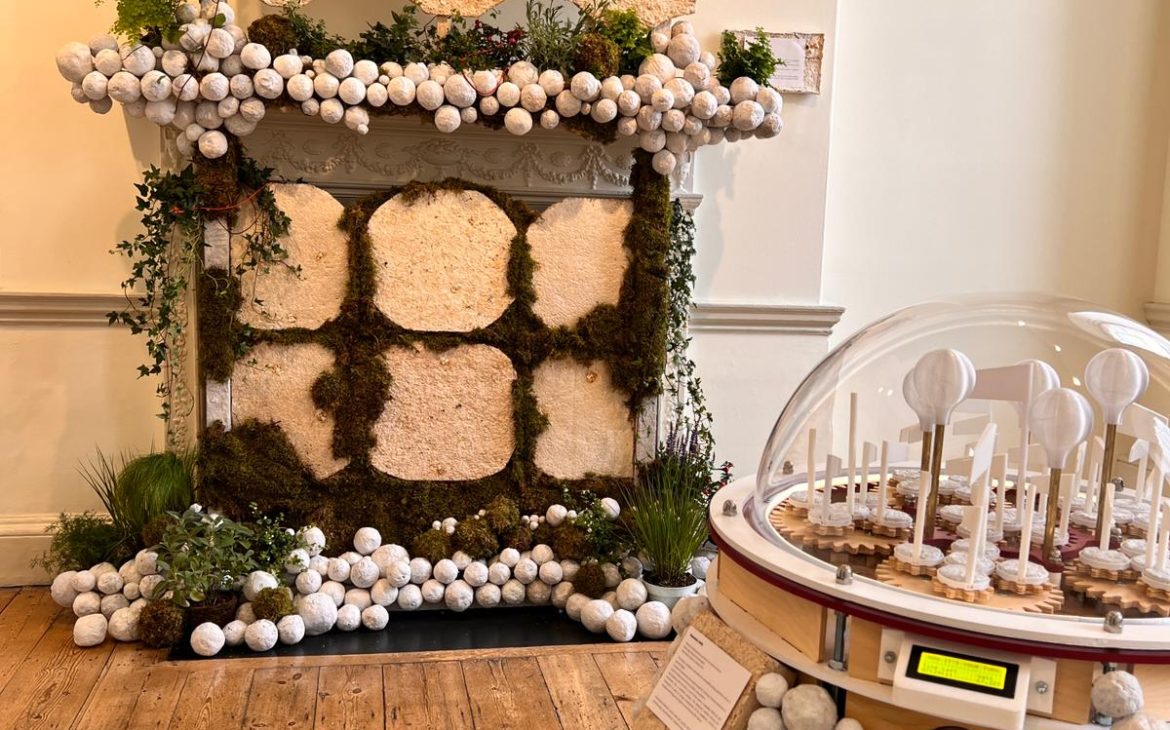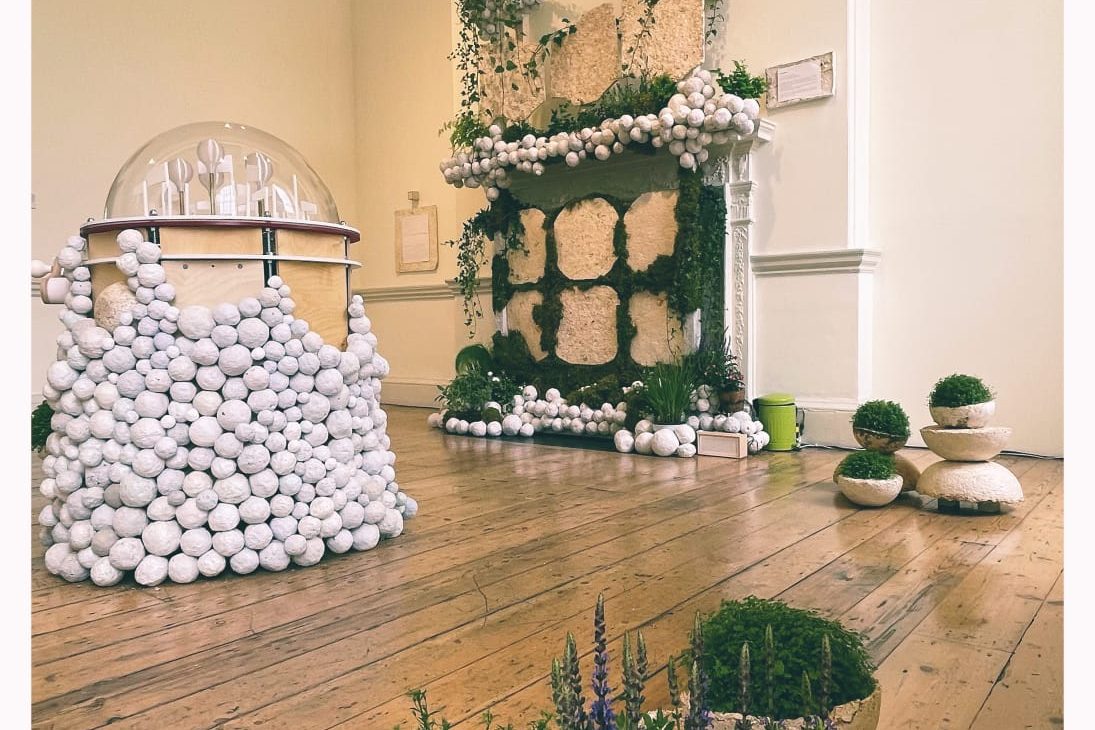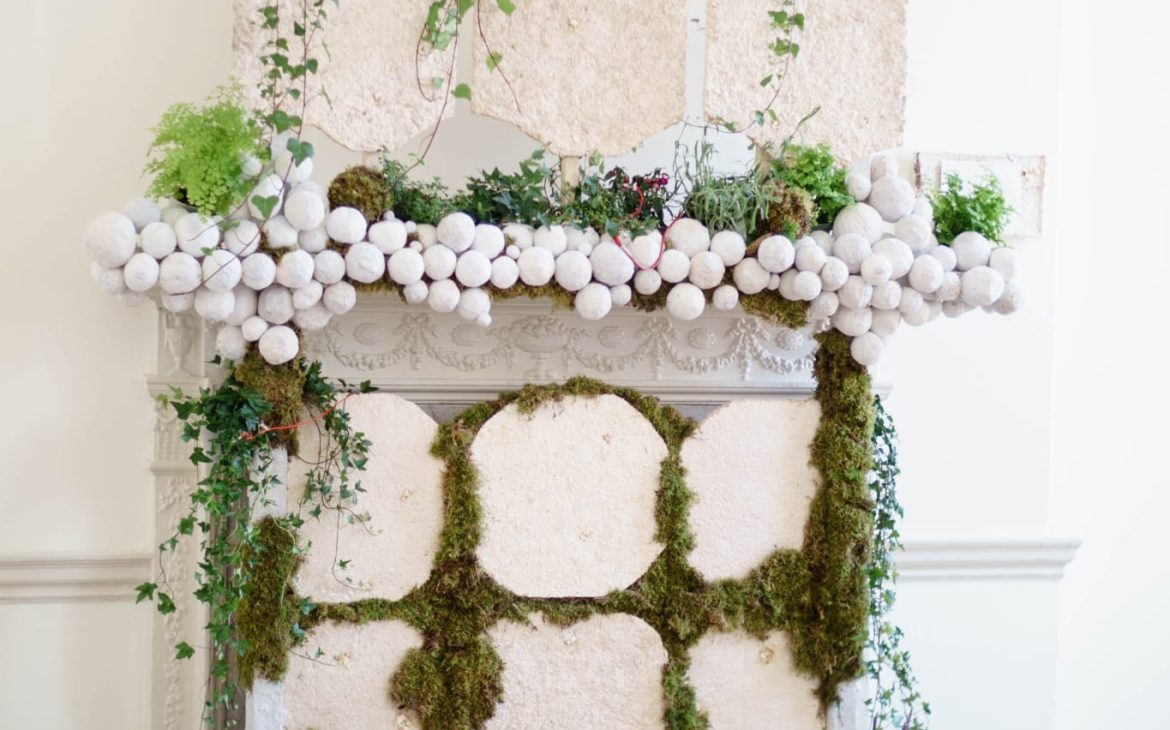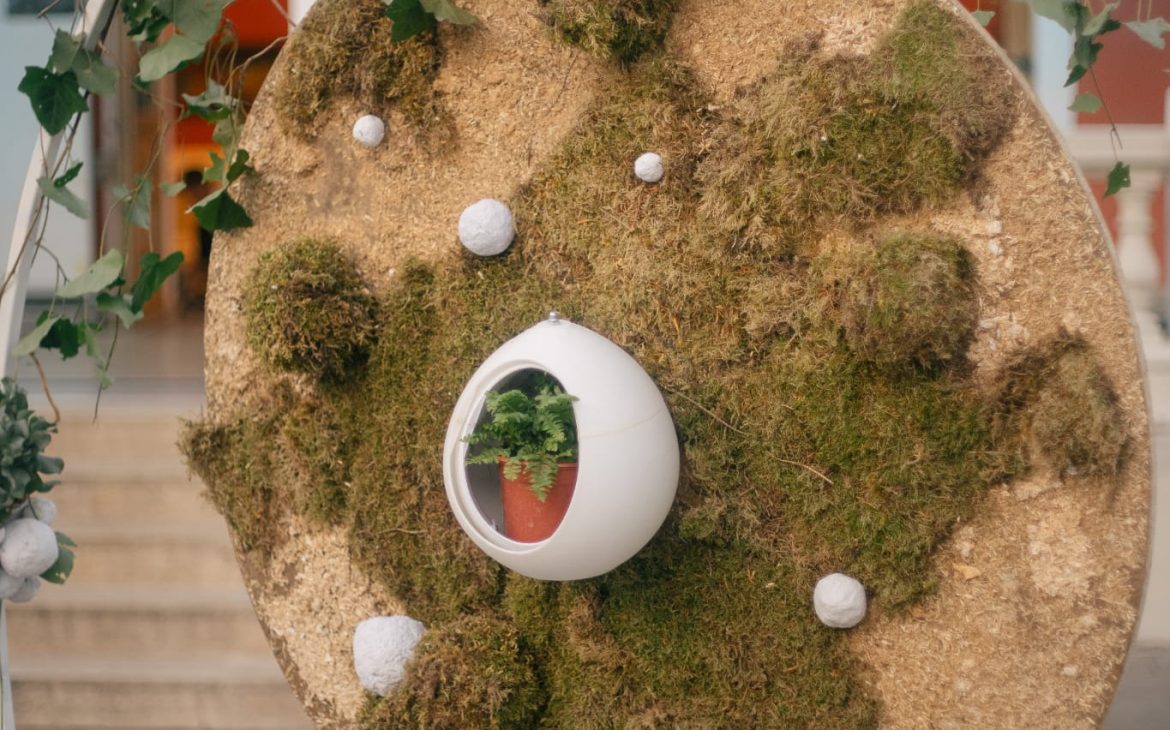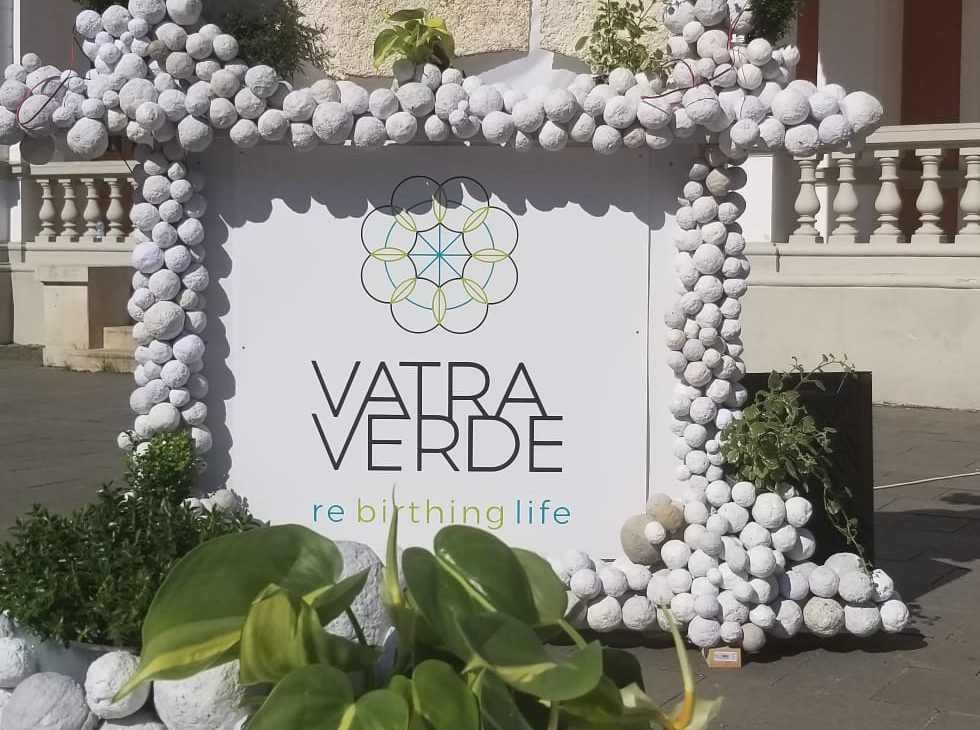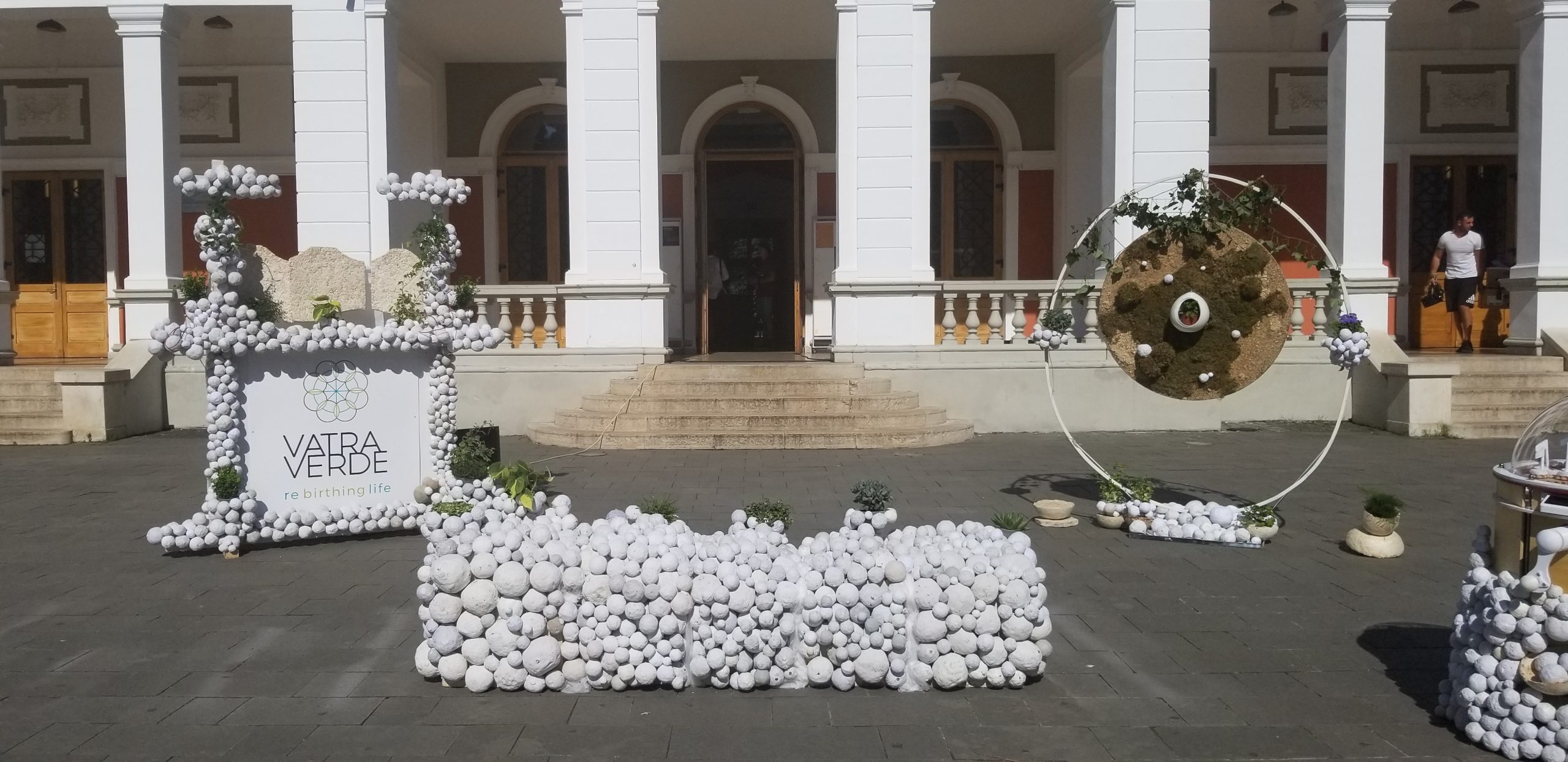In June, Romania participated for the first time in the Design Biennale in London, the most crucial profile event in Europe, with the “Vatra Verde” installation. This month the installation was exhibited for 11 days at the Casino Urban Culture Center in Cluj-Napoca, where over 5,000 people admired it.
The “Vatra Verde” installation includes renewable energy, mycelium, art objects from recycled materials, interactivity, tradition, poetry, and a technical solution through which plant vibrations are transformed into sounds.
At a conceptual level, the substrate of this multidisciplinary installation is closely related to the central theme of this year’s Biennale – “Reinterpretation of collaborations.” From an aesthetic point of view, the building pays homage to the great sculptor Constantin Brâncusi by reinterpreting the work “Table of Silence.”
“I believe that conscious design has the potential to change the world, not just be aesthetically pleasing. We tried this cultural project to change the perception of industrial design and familiarize the public with sustainable alternatives. The public in Cluj received the exhibition with great curiosity and warmth; we are glad that we managed to bring a small part of the atmosphere of the London Biennale to Cluj-Napoca”, says Cristina Cantemir, president of the Art Mirror Association.
During the events in London and Cluj, visitors were able to interact with the “Vatra Verde” installation.
The artistic experience was expanded by adding performance shows built on visual concepts, music, fashion design, and workshops, creating a fusion between performance and visual art.
Blind people and people with disabilities could discover the installation thanks to the support of the Inclusive Access Social Enterprise through tactile-visual and digital information accessible through QR codes and with the help of the phone.
“It was a considerable effort of our association to represent Romania at the London Design Biennale this year, but we are very pleased with its success. The public actively interacted with the installation, and visitors contributed to creating renewable energy. In addition, the Romanian Pavilion was the most visited by people with visual impairments, being the only inclusive exhibition for blind people within the London event. Also, many Romanians settled in Great Britain told us that they came from considerable distances to see the Romanian Pavilion because this is the first time that Romania is represented at the London Biennale”, says Cristina Cantemir, president of the Art Mirror Association.
“For me, the most beautiful part was represented by the interaction of children, pupils, and students with these recyclable materials and finding the joy of playing when they learned and experienced the realization of these constructive elements that materialized in the Vatra Verde installation. This creative, experimental emulation and its upbeat vibe could also be felt by the visitors of Romania’s stand at the London Design Biennale; they could rediscover the joy of childhood through play.
At the same time, the sounds of the plants and the visitors’ interaction with them complemented or instead enhanced the experiences in this space”, says George-Ciprian Mihnea, professor at the University of Art and Design in Cluj-Napoca and the curator of the Vatra Verde project.
The Art Mirror Association and the Cosmic House Foundation, in collaboration with the Casino-Urban Culture Center and Cluj-Napoca City Hall, organized the event in Cluj-Napoca.
“We are excited about our partnership with the Art Mirror Association, the founder of the Vatra Verde project. The Vatra Verde project is a captivating expression of the power of regeneration and reinvention, realized through art and innovation”, says Alexandra Băieș, one of the co-founders of The Cosmic House.
About the Art Mirror Association
The Artistic Cultural Association Art Mirror is a non-governmental organization that experiments and tests sustainable techniques and solutions to educate the community in recycling, reuse of materials, and ecology. Since 2015, the association regularly organizes workshops, exhibitions, activities, and community actions.
